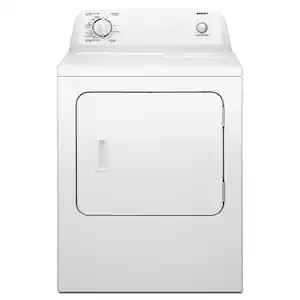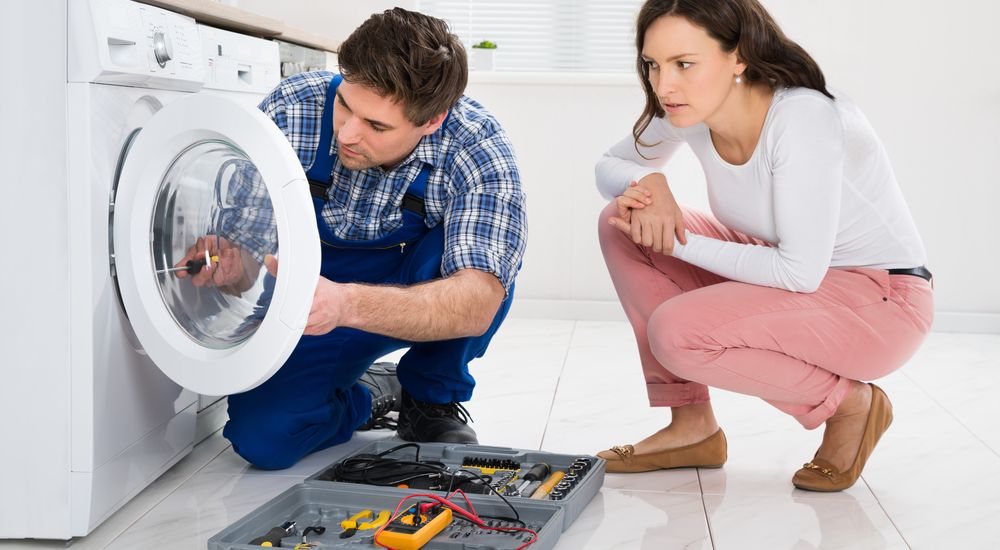Working time:
Monday to Saturday: 8:00 A.M. – 7:00 P.M.
Sunday: 9:00 A.M. - 4:00 P.M.
Working time:
Monday to Saturday: 8:00 A.M. – 7:00 P.M.
Sunday: 9:00 A.M. - 4:00 P.M.
Client Services:
Client Services:
Whirlpool Dryer Repair
Whirlpool dryers are a staple in many households, known for their reliability and advanced features. Despite their quality, they may occasionally face issues like uneven drying, strange noises, or a complete failure to start. Timely troubleshooting and maintenance can address these concerns, ensuring your Whirlpool dryer operates efficiently for years to come. This guide provides solutions for common problems, practical troubleshooting steps, and maintenance tips to keep your dryer in top condition.

Common Problem
Whirlpool dryers are durable but not immune to wear and tear. Some common issues include clothes remaining damp after a cycle, overheating, or operational failures such as a drum that won’t spin. These problems often result from clogged vents, worn belts, or faulty electrical components like the thermal fuse or control board.
If clothes are still wet after drying, it could indicate a problem with the heating element, moisture sensor, or restricted airflow. Overheating is typically caused by clogged vents or a malfunctioning thermostat. Operational failures, such as a drum that doesn’t spin, often point to issues with the drive belt or motor.
Whirlpool Clothes Dryers Troubleshooting
If your Whirlpool dryer isn’t producing heat, inspect the heating element for visible damage or burnout. Check the thermal fuse for continuity using a multimeter. A faulty thermostat or cycling switch may also be the culprit. Replace any defective parts as needed.
Start by cleaning the lint filter and checking the vent hose for blockages. Ensure the external vent is free of debris. If the problem persists, inspect the moisture sensor for proper functionality and replace it if necessary. Also, check the drum seals for wear, as leaks can reduce drying efficiency.
Overheating can be caused by airflow restrictions or faulty temperature controls. Clean the vent system thoroughly and inspect the cycling thermostat. Test the thermal fuse and high-limit thermostat, replacing them if they fail a continuity test.
If the drum doesn’t spin, examine the drive belt for wear or damage and replace it if necessary. Inspect the drum support rollers for smooth operation. A faulty motor or idler pulley could also be to blame. Test these components and replace any that are defective.
If the dryer won’t start, ensure it is properly plugged in and that the power outlet is functioning. Check the door latch to confirm it is engaging fully. Test the start switch and control board for continuity, replacing them if required.
Top 6 Problems and Solutions for your Whirlpool dryer
Dryer Not Heating Properly
1. Check the heating element for visible damage
2. Test the thermal fuse with a multimeter
3. Inspect the cycling thermostat for proper operation
4. Ensure the vent system is not obstructed
5. Replace any malfunctioning components
Clothes Remain Damp After Drying
1. Clean the lint trap and vent hose thoroughly
2. Test the moisture sensor for accuracy
3. Inspect the drum seals for leaks
4. Check the blower wheel for damage
5. Replace the heating element if needed
Dryer Overheating
1. Clean the lint filter and exhaust vent
2. Test the cycling thermostat and high-limit thermostat
3. Inspect the thermal fuse for continuity
4. Ensure the blower housing is clear of debris
5. Replace any defective components
Drum Not Spinning
1. Inspect the drive belt for wear
2. Check the drum support rollers for smooth operation
3. Test the idler pulley for functionality
4. Examine the motor for faults
5. Replace any broken or worn parts
Dryer Not Starting
1. Verify the power supply and outlet are working
2. Check the door latch for proper engagement
3. Test the start switch and thermal fuse
4. Inspect the control board for errors
5. Replace any faulty components
Excessive Noise During Operation
1. Inspect the drum support rollers for wear
2. Check the drive belt for damage
3. Look for foreign objects in the drum
4. Test the motor for abnormal noise
5. Replace any worn parts
Additional Whirlpool Dryer Troubleshooting Techniques
To keep your Whirlpool dryer running smoothly, clean the lint filter and inspect the vent system regularly. This helps prevent overheating and ensures efficient drying.
If the dryer won’t start, confirm all electrical connections are secure, and check key components like the thermal fuse, start switch, and control board.
For noise issues, inspect the drum support rollers, drive belt, and motor. Replace any worn or faulty parts to avoid further complications.
Routine maintenance and prompt repairs will help your Whirlpool dryer last longer and perform efficiently.

Schedule an Appointment Online
Contact us:
Phone Number
+1 (855) 879-9929
info@washer-dryer-repair-service.com
Working Hours
Mon – Sat: 8AM – 7PM
Sun: 9AM – 4PM
